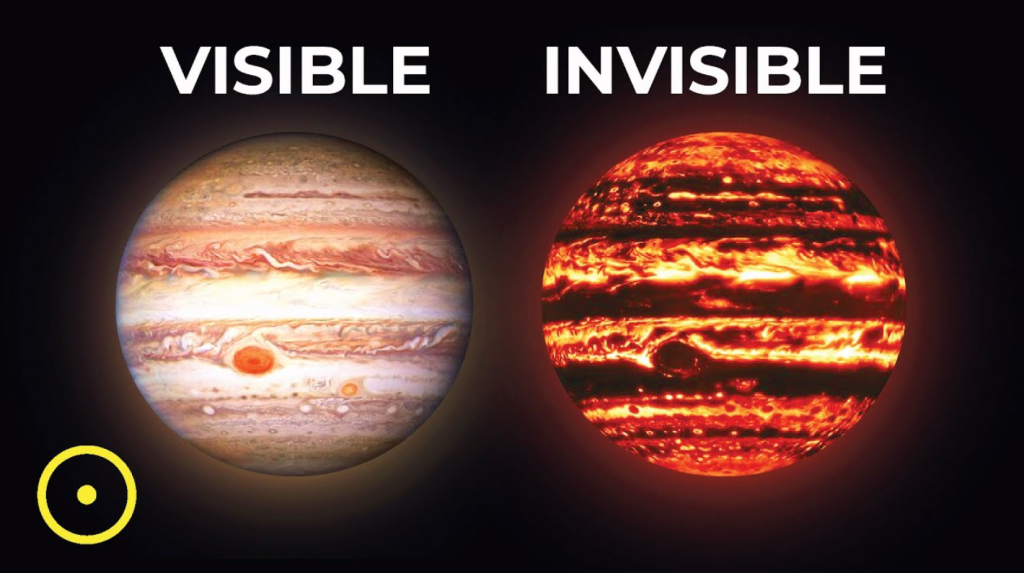The universe is vast, and most of it remains hidden from our eyes. When we observe the cosmos, we’re only seeing about 0.35% of what actually exists, as much of the universe emits light beyond the visible spectrum. Our eyes can detect just a small portion of light, but there’s a whole electromagnetic spectrum that reveals different aspects of the universe.

The electromagnetic spectrum includes various types of light, from radio waves to gamma rays, each revealing a different part of the universe. Radio waves, for instance, have the longest wavelengths and can pass through thick clouds of gas and dust that block visible light. Using radio telescopes, like the Very Large Array in New Mexico, scientists can map the structure of galaxies and even hear signals from distant cosmic objects. Radio waves expose hidden activity in galaxy cores and allow us to study pulsars, quasars, and even the cosmic web that connects galaxies.
Microwaves are another important tool for exploring the cosmos. These waves help us study the cosmic microwave background (CMB), the afterglow of the Big Bang. This radiation gives us a snapshot of the universe when it was just 380,000 years old, helping scientists understand the origins and structure of the universe. Microwaves also reveal the tiny temperature fluctuations that would eventually evolve into galaxies.
Infrared light, often associated with heat, allows astronomers to peer into dense clouds of gas and dust where new stars and planetary systems are born. Instruments like the Spitzer Space Telescope act like heat vision goggles, revealing objects too cool to emit visible light but still warm enough to glow in the infrared.
Ultraviolet light is another powerful tool, helping scientists study hot, young stars, the chemical composition of galaxies, and intense star formation. Instruments on the Hubble Space Telescope detect ultraviolet light to reveal the effects of stellar winds and supernovae on their surroundings.
X-rays expose the most energetic and violent processes in the universe, such as the remnants of supernovae and the environments around black holes and neutron stars. The Chandra X-ray Observatory captures detailed images of these high-energy regions, helping us understand extreme physics.
Gamma rays, the most energetic form of light, reveal explosive events like gamma-ray bursts that occur when massive stars collapse or neutron stars collide. The Fermi Gamma-ray Space Telescope helps us study these intense cosmic phenomena, shedding light on the most violent processes in the universe.
While we can’t see black holes directly, we can observe their effects on the surrounding matter. One of the most groundbreaking discoveries in astronomy was the first image of a black hole’s event horizon, captured by the Event Horizon Telescope. This achievement provided visual evidence of black holes and confirmed many of our theoretical predictions.
Invisible light also plays a crucial role in the discovery of exoplanets—planets orbiting distant stars. Infrared observations, for example, reveal the heat signatures of these planets, while techniques like the transit method help us identify new worlds. Scientists are now able to study the atmospheres of exoplanets, opening the possibility of discovering habitable planets.
Moreover, invisible light has allowed us to uncover dark matter, an invisible substance that makes up about 27% of the universe. Although we can’t see dark matter directly, we can observe its gravitational effects on visible matter, helping us understand its distribution throughout the cosmos.
These discoveries—enabled by the use of invisible light—continue to shape our understanding of the universe. By exploring the invisible, we gain new insights into the fundamental nature of the cosmos, revealing a richer, more complete picture of the universe.